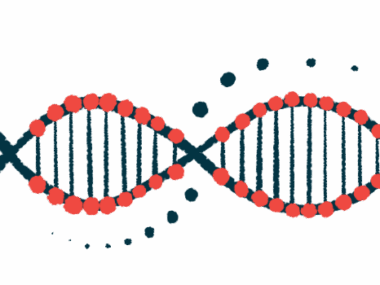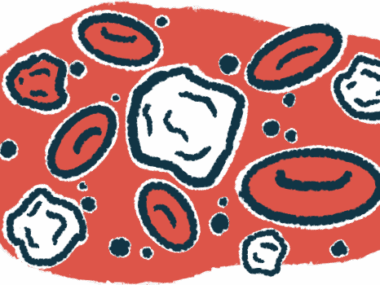Arthritis ointment diacerein heals chronic wounds in girl with RDEB
Diacerein promoted healing of recurrent, long-standing wounds within 4 weeks
Written by |

A topical ointment containing diacerein, an arthritis medication, promoted wound healing in a 5-year-old girl with hard-to-treat recessive dystrophic epidermolysis bullosa (DEB), a case study reports.
“These data characterize diacerein as a potential candidate for improving wound healing in RDEB through its impact on inflammatory [cells],” researchers wrote.
The study, “Repurposing diacerein for the treatment of chronic wounds in recessive-dystrophic epidermolysis bullosa patients by modulating matrix metalloproteinase-9 expression,” was published in The Journal of Dermatology.
Like with other types of epidermolysis bullosa (EB), RDEB patients have fragile skin that easily tears and blisters when touched. They also have an increased risk of developing squamous cell carcinoma, a type of skin cancer. Most available treatments prevent or reduce blistering and/or treat blisters to prevent infections or further damage.
Diacerein blocks pro-inflammatory signaling protein interleukin-1-beta
Diacerein is a small-molecule drug used to treat degenerative joint diseases like osteoarthritis. It works by blocking the pro-inflammatory signaling protein called interleukin-1-beta.
A topical ointment containing 1% diacerein, called CCP-020, has undergone clinical testing for epidermolysis bullosa simplex (EBS), the most common type of EB. Early data from a Phase 2 study suggested the ointment reduced skin blistering by 60% versus 15% among placebo recipients. However, in a second Phase 2 trial (NCT03154333), diacerein failed to reduce the body surface area of EBS lesions by at least 60%, the trial’s primary goal.
Despite differences in severity and clinical presentation between EBS and RDEB, both subtypes show skin inflammation, with interleukin-1-beta as a key player.
Therefore, researchers at the University of Salzburg, in Austria, evaluated whether a 1% diacerein ointment could improve wound healing in a young girl with RDEB and chronic, generalized skin involvement that failed to respond to previous treatments.
The girl had extensive wounds and erosions on her upper back. Some wounds had been present for more than four weeks, while wounds healed and recurred in other areas, according to her parents.
She began treatment with 1% diacerein cream applied once daily to her upper back during regular wound dressing changes. After two days of treatment, her skin improved, so her family extended the treatment to her lower back.
After four weeks, all wounds had closed except for one coin-sized lesion. In addition, she experienced a considerable improvement in her quality of life and increased energy during the day. This was due to reduced itch, more sleep, a cessation of bedwetting, no adhesion between her skin and pajamas in the morning, and a notable reduction in the use of dressings.
‘… the skin is recovering very well’
Six additional weeks of treatment sustainably improved the child’s back, except for a small lesion. “Otherwise, the back is beautiful, and the skin is recovering very well,” the mother said.
Given this outcome, the team analyzed skin cells, or keratinocytes, isolated from a skin biopsy previously taken from the patient when she was 1 year old. They focused on matrix-metalloproteinase 9 (MMP-9), a protein involved in wound healing that’s abundant in RDEB blister fluids and contributes to abnormal wound healing when overexpressed.
Experiments revealed the levels of MMP-9 were significantly increased in the girl’s skin cells relative to a 23-year-old healthy donor. When exposed to lipopolysaccharides to trigger an inflammatory response, the production of interleukin-1-beta and MMP-9 was boosted in her skin cells in a dose-dependent manner.
Treatment with diacerein significantly reduced the protein levels of MMP-9, suggesting that the “beneficial therapeutic effect of diacerein may, at least partly, be conferred by MMP-9 modulation,” the researchers wrote.
To confirm MMP-9 expression in the edges of chronic RDEB wounds, the team assessed the abundance of MMP-9 and interleukin-1-beta in skin sections from a 31-year-old RDEB patient. Data showed the expression of MMP-9 and interleukin-1-beta was significantly higher in the margins of wounds than in skin regions without wounds.
“This single-case observation indicates that diacerein was effective in promoting healing of both recurrent and long-standing wounds of an RDEB patient within 4 weeks of treatment,” the researchers wrote. “These early data point to diacerein as a potential candidate for the treatment of wounds in RDEB.”







